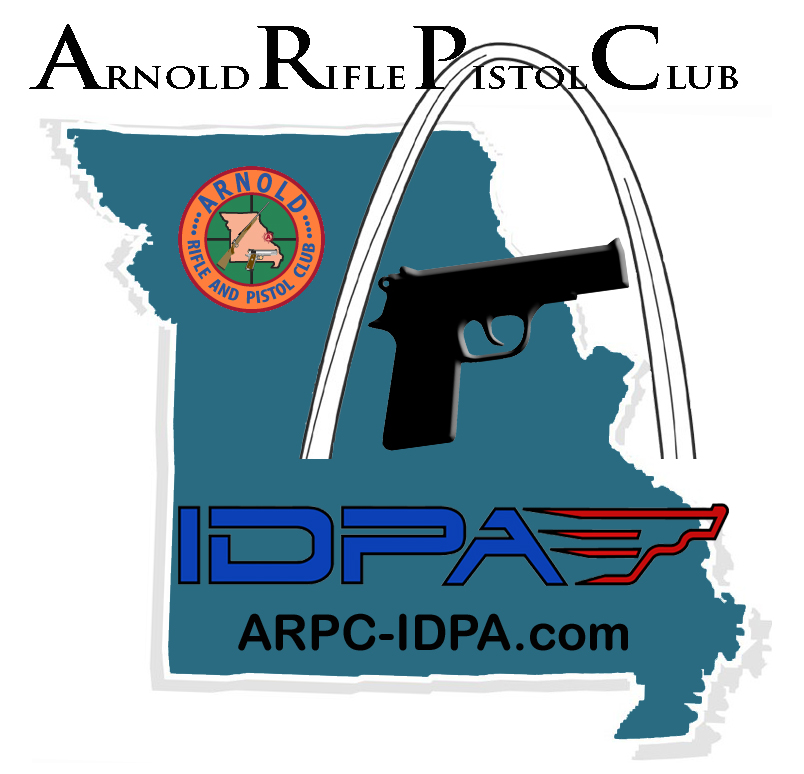Helpful Info for Shooting a Classifier:
(It is recommended that you shoot at least 2-3 club level matches before attempting a classifier)
Classifier Stage 1
In Stage 1 strings 1 through 4, do not miss the head shots, even if you have to slow down and shoot only one good shot every 2 seconds. Remember, a miss is 5 points down, which adds 2.5 seconds to your score. So even if you took 2 seconds for each shot and scored a hit instead of a miss, you'd still be way ahead!
The head shots in the Classifier are all-or-nothing; A shot dropped into the body does not count at all. Take your time and get all the hits.
In string 5, the targets are engaged one shot each weak-hand-only. Remember that when shooting one-handed, the gun will tend to recoil "in", that is, toward your other side. This means that it is slightly easier and faster when shooting left-handed to engage the left-most target in the array first, followed by the targets to the right of the first one. This is especially true if you cant the gun slightly inboard to reduce muscle tension in your forearm and improve accuracy.
In string 6, you will start facing up-range, turn, draw, and engage the targets. For safety reasons, TTW prefers that you turn to your gun side. This results in limiting the possibility of the gun being pointed up-range to a narrow 90-degree window, rather than a 270-degree window if you turn away from your gun side. You may also be disqualified if you point your gun up-range, but we are talking safety here. (Turning away from the gun side is taught by many respected firearms instructors, as it "hides" the draw, even if it is a bit slower.) While TTW does not wish to make you do anything that goes against your training or preferences, we recommend and prefer that you turn to your gun side while shooting this string. Usually, the Safety Officer will ask which way you intend to turn and will arrange himself and any bystanders to minimize exposure to your pistol. If you are not asked, please state which way you intend to turn.
In string 7, the targets are engaged two shots each strong-hand-only. In this case, the gun will tend to recoil toward the weak side, so a right-handed shooter is well advised to engage the right-most target first, followed by those to the left of it. For a left-handed shooter, the reverse is true.
Classifier Stage 2
Stage 2 strings 1 and 2 involve shooting on the move. Keep your knees flexed, walk heel-to-toe, and "glide along" -- the front sight will not bounce at all if you do this right. You can practice this at home, or even at the office -- using a full coffee cup instead of your gun. The "step and drag" method requires that you time your shots and although it is still taught to some military/LE groups, it is not very effective except in special situations like team-action riot control, or negotiating uneven or unknown terrain in the dark. For all other situations, use the glide -- it works.
Also, remember to practice the glide forward and backward.
In string 3, you will once again start facing up-range. The notes above concerning Stage 1 string 6 apply here as well.
The last two strings (3 and 4) in Stage 2 are done while standing still, and resemble strings 6 and 7 in Stage 1. But remember that you are now at 10 yards instead of 7, and you will need to slow down a bit compared to 7 yards to get good hits.
Classifier Stage 3
Big Secret: For shooters at the Marksman level and below, this stage is actually a Bullseye Target Pistol Match disguised as an IDPA stage. There is even a barricade and a tactical reload thrown in to fool you into forgetting this! But there are 18 shots at 20 yards, and 12 more shots at 15 yards. Slow down! - Way Down. Shoot this like you are shooting for a small group size at 25 yards; Precise sight alignment and trigger control are paramount. Many shooters rise from Marksman to Sharpshooter only by slowing down on Stage 3 and getting the hits. No kidding! - I did it myself, and I've seen many others do it as well.
Just remember the IDPA scoring system:
A miss is 5 points. That adds 2.5 seconds to your score. A worst-case hit in the -3 zone adds 1.5 seconds to your score. The difference is one second. Who can't at least hit the target if they slow down by one whole second per shot?
A hit in the -3 zone adds 1.5 seconds to your time. If you are hitting in the -3 zone, this means you can take 1 second longer to aim, hit the center, and still come out 1/2 second ahead!
A hit in the -1 zone adds 1/2 second to your score. Slow down just a little less than 1/2 second, hit the center, and you are ahead!
